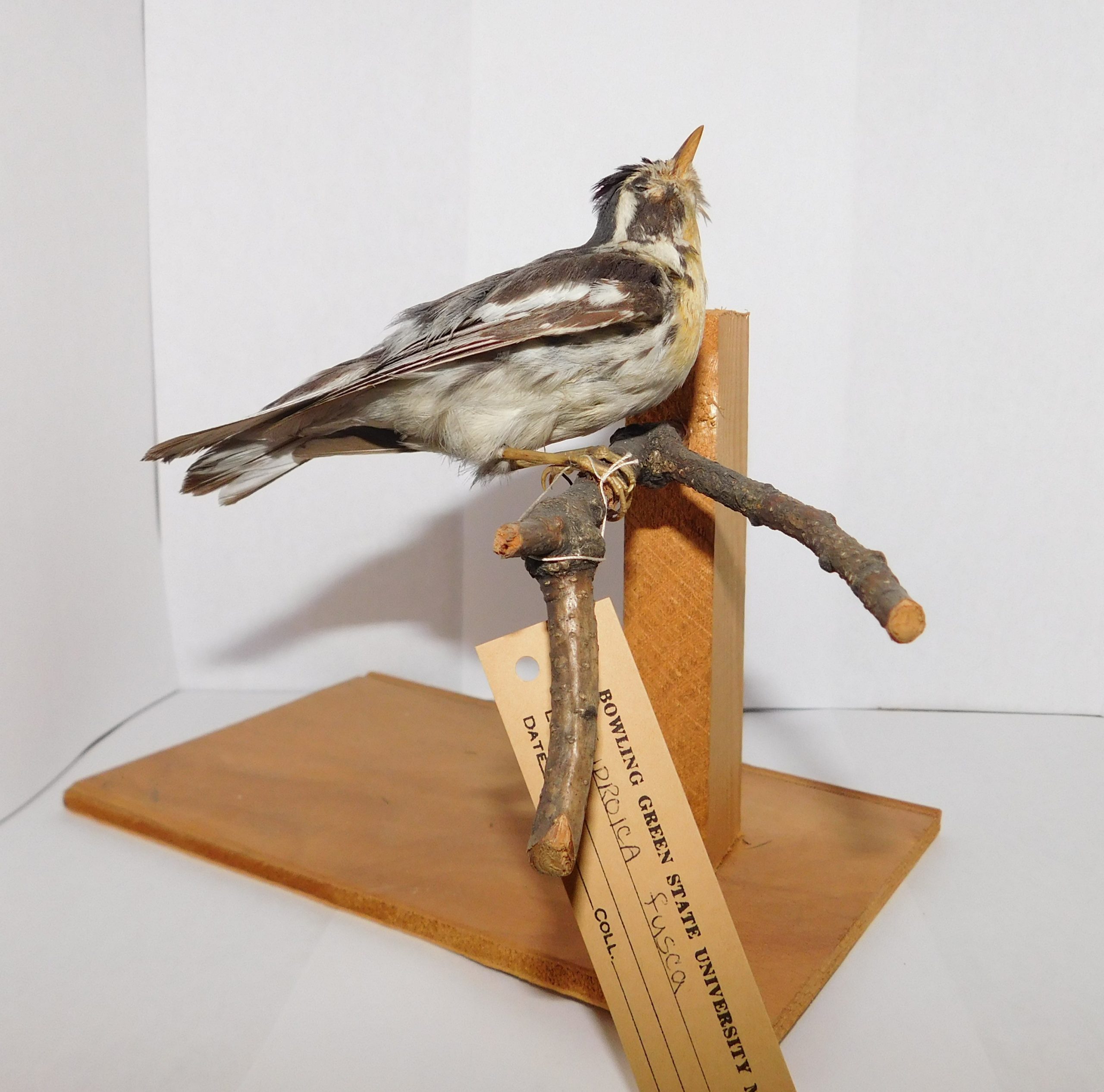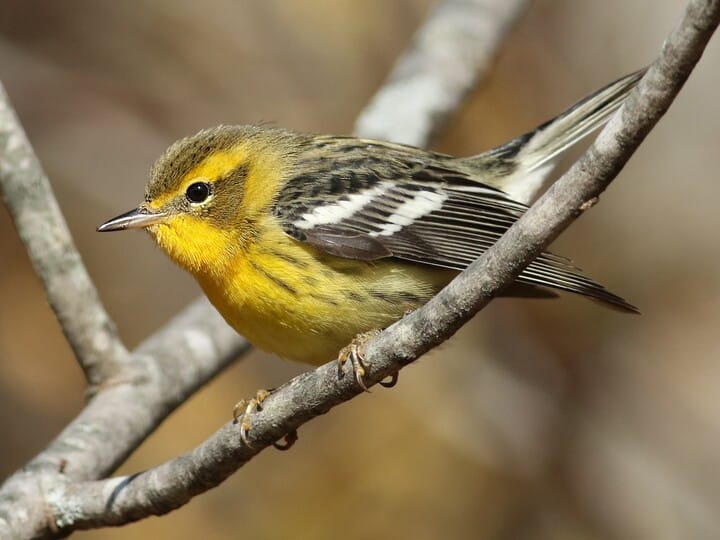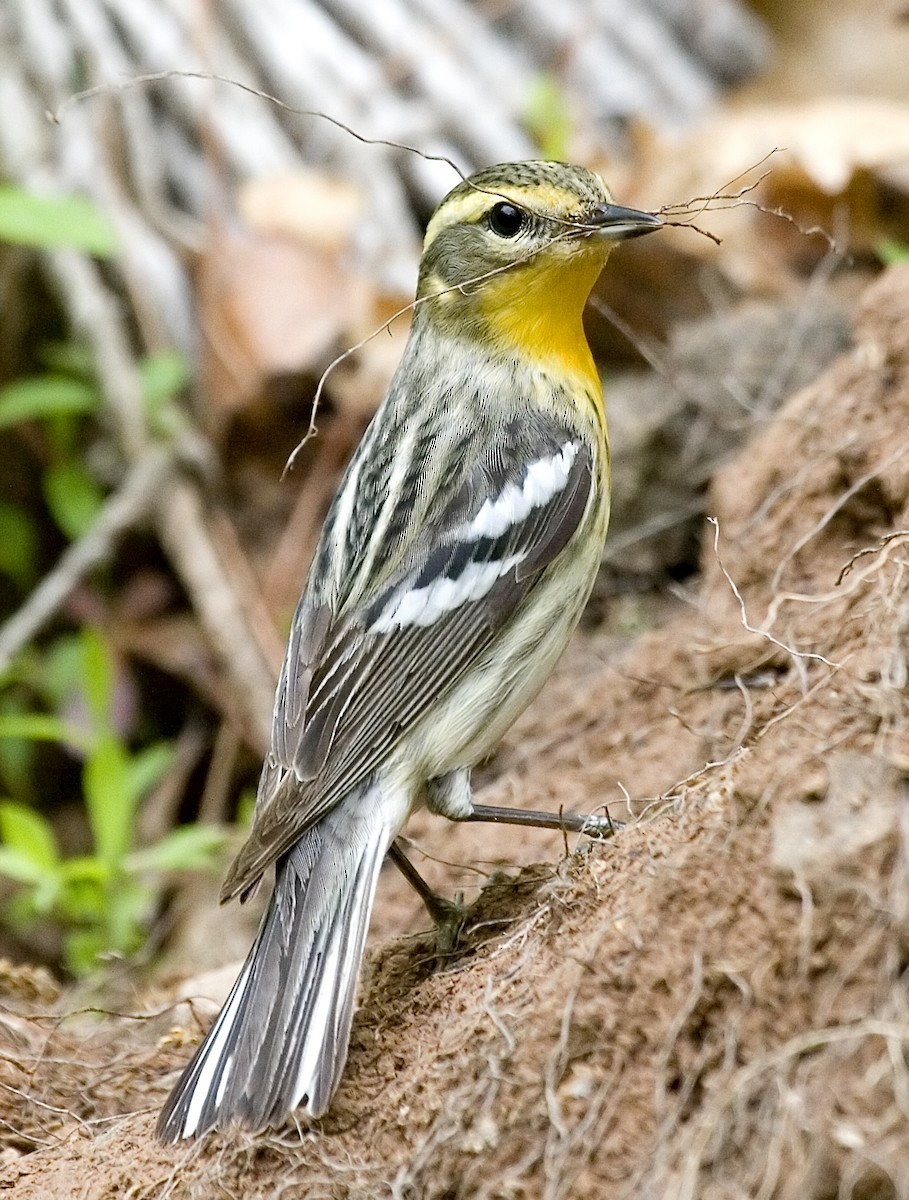- Scientific Name: Setophaga fusca
- Habitat: Forests
- Food: Insects
- Nesting: Trees
- Conservation Status: Least Concern



Breeding male Blackburnian Warblers are vivid orange in the face and the throat, with a white belly with black streaks. Males have a black crown and triangle ear patches. Females are palers and more yellow overall, with two white wing bars.
Habitat & Range
Blackburnian Warblers can be found high in the canopy of mixed deciduous-coniferous forests during the summer, primarily in hemlock trees. Migrants prefer the same habitat, but can be found essentially any place with trees, foraging near the ground in shrubs.


Food
Blackburnian Warblers are insectivores, preferentially eating caterpillars of the abundance spruce budworm. In addition to these larvae, they also eat spiders, mayflies, beetles, and ants. Most of their prey is captured by gleaning over, but also probe needle clusters or clumps of dead leaves.

Nesting
Females are primarily tasked with nest building, choosing the far end of a limb high in a coniferous tree, typically in dense foliage. Their nests are typically higher in the tree than those of other warbler species, up to 80 feet high. The nest is made of twigs, bark, rootlets, and fibers.
Nesting Facts
- Clutch Size: 3-5 eggs
- Number of Broods: 1 brood
- Egg Length: 0.6-0.7 inches
- Egg Width: 0.4-0.5 inches
- Incubation Period: 12-13 days
- Egg Description: white or greenish white with brown spots or blotches


Citations
Morse, D. H. (2020). Blackburnian Warbler (Setophaga fusca), version 1.0. In Birds of the World (A. F. Poole, Editor). Cornell Lab of Ornithology, Ithaca, NY, USA. https://doi.org/10.2173/bow.bkbwar.01
